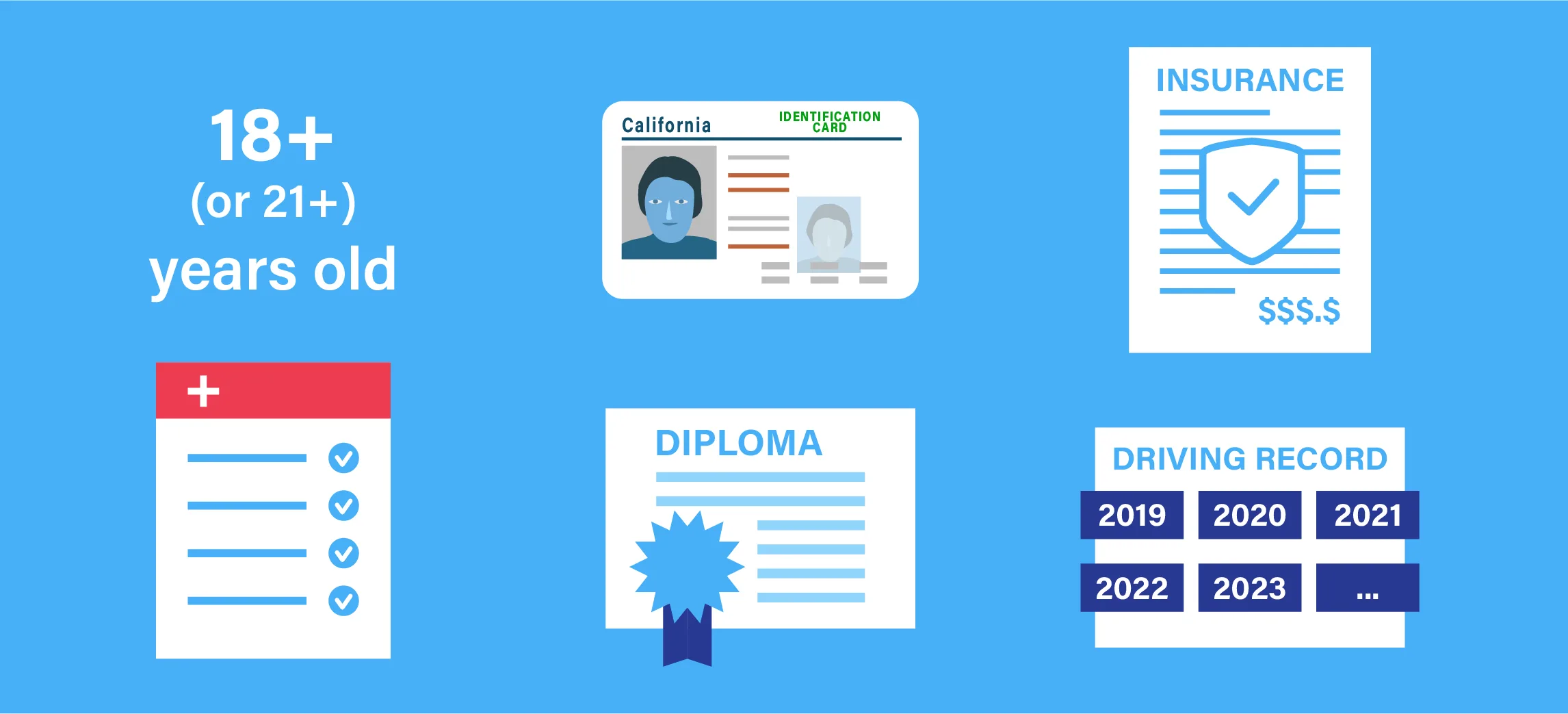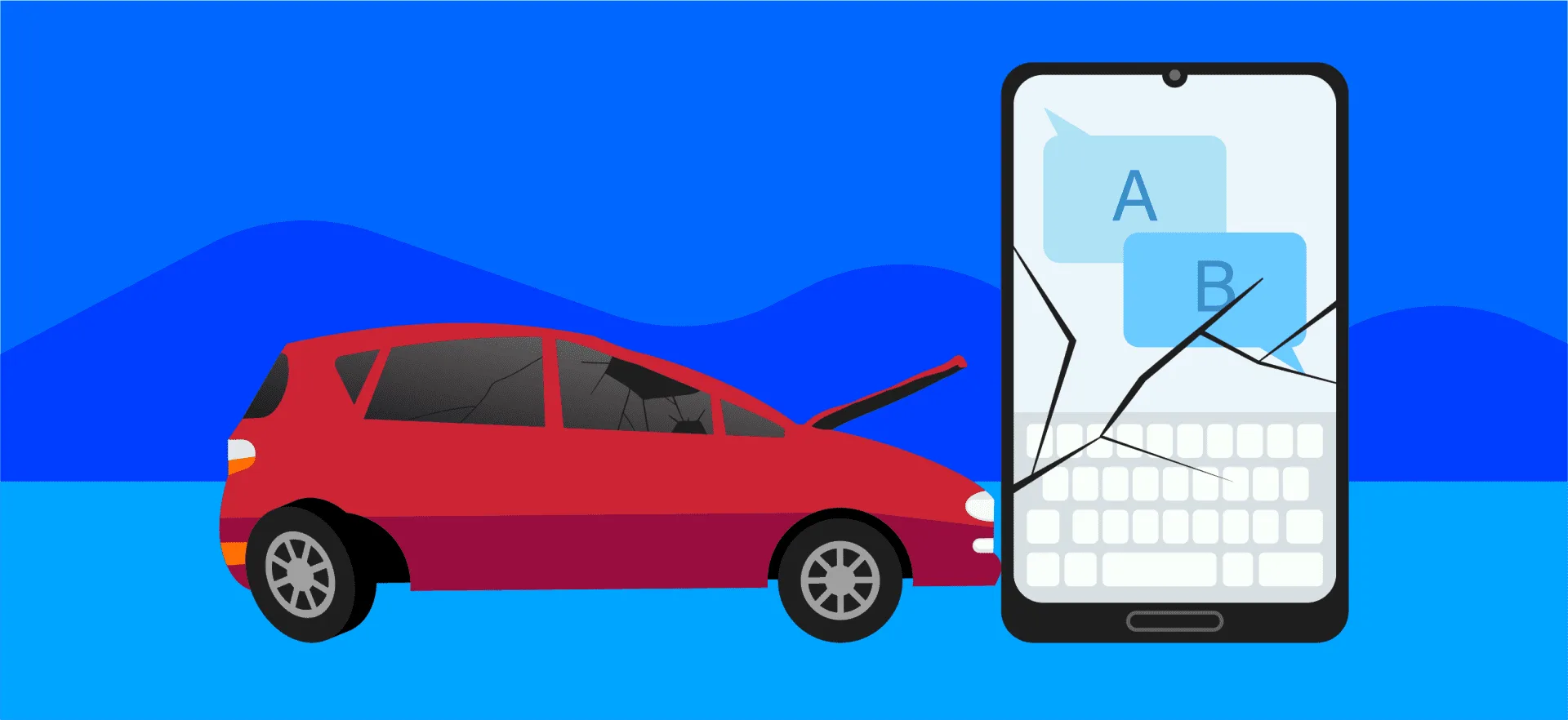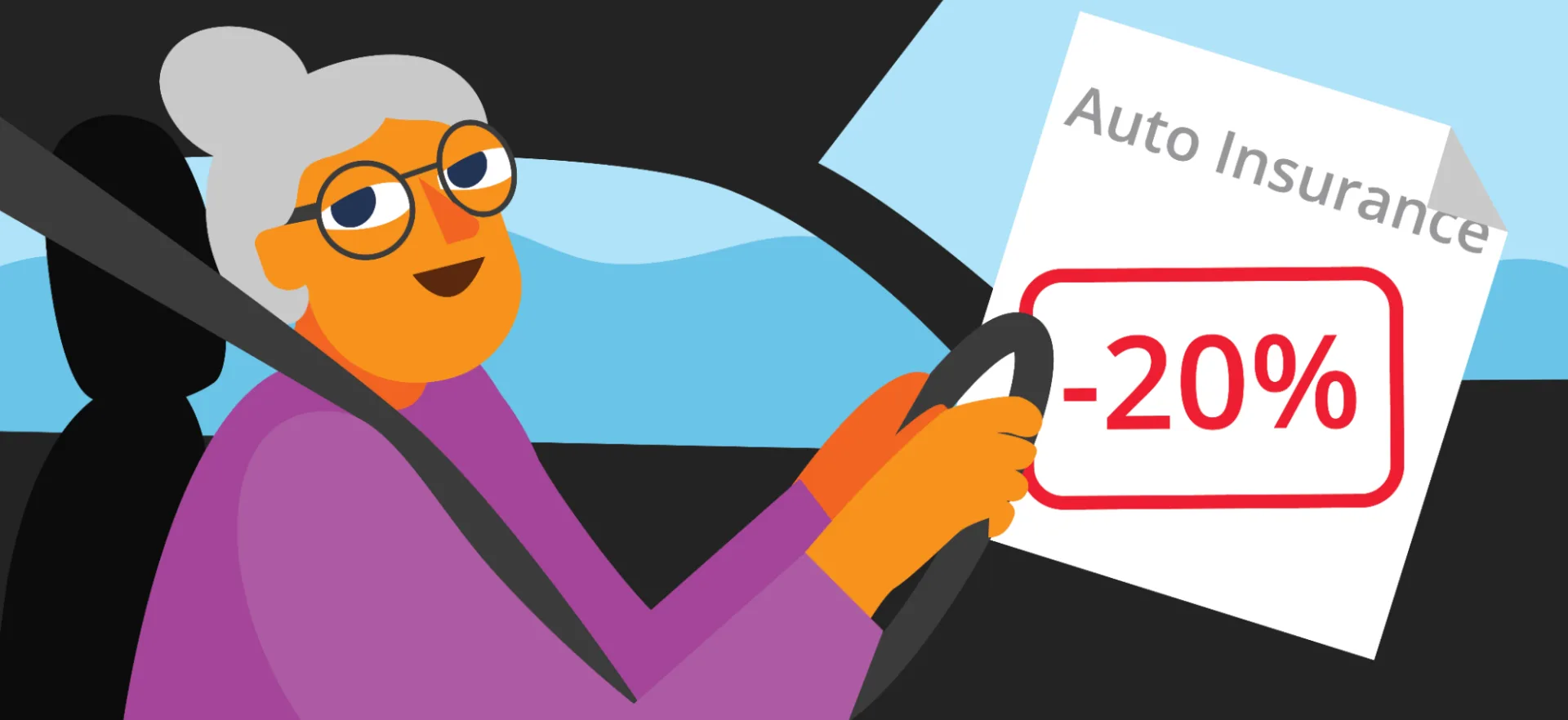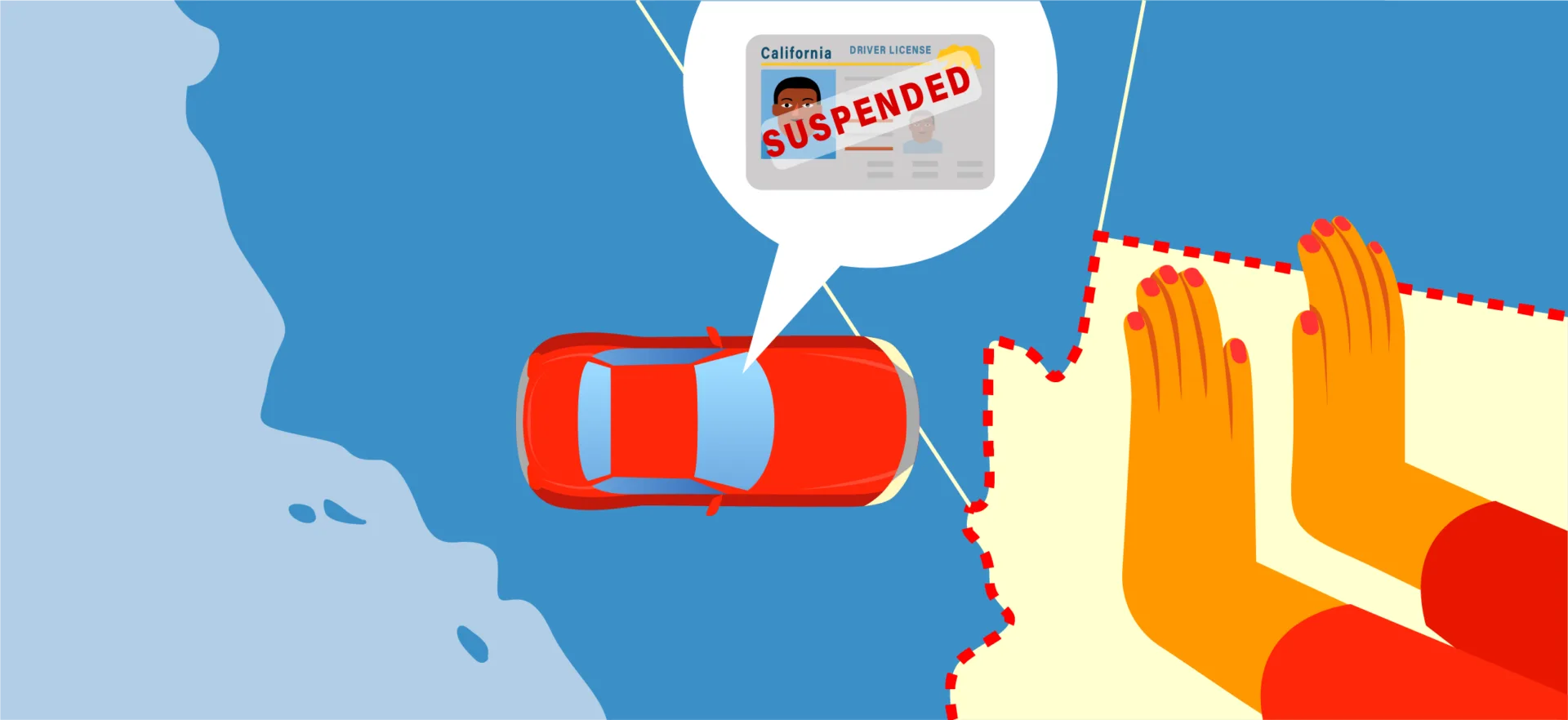Whether you want to drive a truck, bus, or delivery van, you need a commercial driver’s license (CDL). This document allows you to operate heavy vehicles, unlocking new career paths.
Here’s what you should know about obtaining a CDL license in California, including eligibility criteria, training requirements, and fees. Also, note that there are different types of CDL licenses, which we’ll cover in this guide.
How to Apply for a California Commercial Driver’s License
Individuals who want a CDL must meet certain eligibility criteria and complete specialty training. Here’s a breakdown of the essential requirements:
- Make Sure You’re Eligible: In California, commercial drivers must be at least 18 for in-state driving or 21 for between-state commutes. They also need a high school diploma or equivalent, as well as a standard driver’s license (Class D).
- Get a Commercial Learner’s Permit (CLP): If you’ve never had a CDL, you must first apply for a commercial learner’s permit, which requires passing a knowledge test. This document is valid for 180 days from the date it’s issued. You’ll need to hold it for at least 14 days prior to applying for a CDL license in California.
- Attend CDL Training: After 14 days with your CLP, you may sign up for Entry Level Driver Training (ELDT) to obtain a CDL. If you’re applying for a Class A or B license, you need to complete at least 15 hours of behind-the-wheel training and submit Form DL 1236 to the DMV.
- Pass the CDL Skills Test: Schedule a road test in a vehicle matching the CDL class you’re targeting (more on this below). The DMV allows up to three attempts, but you must pay a fee each time you retake the test. This part of the application process also includes a vehicle inspection.
- Obtain Your CDL: If you pass the skills test, you’ll get a temporary CDL that’s valid for 60 days. Expect to receive your permanent CDL within 45 days.
- Get Endorsements If Needed: Once you have obtained your CDL, you may apply for endorsements and certifications. These allow you to operate specific vehicles, such as school buses. Each endorsement requires a knowledge test, a skills test, or both.
Traffic school can help you keep a clean driving record, prevent insurance increases, and more!
Class A, Class B, and Class C CDLs
U.S. drivers can choose from three types of CDL licenses, depending on the type of vehicle they want to drive: Class A, Class B, and Class C. Each of these is tailored to specific vehicle types and purposes.

Here’s a breakdown of what each class covers:
- Class A: Ideal for drivers operating combination vehicles with a gross vehicle weight rating (GVWR) exceeding 26,001 pounds, provided the towed vehicle is over 10,000 pounds. Suitable for tractor-trailers, flatbeds, livestock carriers, and other heavy commercial vehicles used for long-haul transportation.
- Class B: Designed for drivers of single vehicles with a GVWR of 26,001 pounds or more or those towing a vehicle under 10,000 pounds. This category typically includes large buses, dump trucks, and delivery vehicles for more localized transport.
- Class C: This is reserved for vehicles outside the purview of Class A or B. It’s tailored for those transporting 16 or more passengers (including the driver) or hazardous materials. It’s a perfect fit for careers like shuttle or school bus driving and hazardous material transport.
Understanding the differences between these CDL classes is pivotal in deciding the type of vehicles you can operate and defining the scope of your professional driving. So, whether you’re looking at interstate trucking, intra-city deliveries, or specialized transport, California has a CDL that meets your needs.
Endorsements and Specializations

If you intend to transport passengers or hazardous cargo, you must obtain specific endorsements. You can do this at the time you get your CDL, or later if you are looking for a different type of driving job.
Suppose that you want to drive a long-haul truck. In this case, you’ll first apply for a Class A CDL and then add endorsements based on the type of cargo or specific jobs you want to do, such as hauling liquids or hazardous materials. This may require passing additional tests and, possibly, a background check.
The most common endorsements on CDLs include:
- Double/Triple Trailer (T): Required for towing two or three trailers. To obtain these endorsements, you must take and pass a knowledge test.
- Tank Vehicle (N): Mandatory for commercial drivers transporting non-hazardous liquid or gas cargo. Just like the D or T endorsement, it requires passing a written test.
- Hazardous Materials (HazMat or H): This endorsement is essential for those transporting hazardous materials ranging from flammable liquids to toxic chemicals. Acquiring it involves an in-depth knowledge test and, sometimes, a background check.
- Passenger Transportation (PV): You’ll need the P endorsement for driving a bus or other commercial vehicles with 16+ seats. To obtain it, you must pass a knowledge test, a skills test, and a background check.
- School Bus (S): You may not drive a school bus without first obtaining the S endorsement. This requires completing additional training and then passing a knowledge test and background check.
- Firefighter (F): A specialized endorsement for those operating firefighting equipment. Given the emergency nature of the role, drivers must undergo fire equipment operator training and pass a knowledge test. They also need to submit an “Original Firefighter Employment and Training Verification” letter to the DMV.
Some endorsements can also be added to your CLP, but certain restrictions apply. For example, CLP holders with the PV endorsement can only transport federal or state auditors, test examiners, or other qualified parties and must be accompanied by a CDL holder.
Commercial Driving Certificates
Commercial drivers may also apply for certain certificates so they can operate specific vehicles or transport sensitive cargo. This is a separate credential indicating that the driver has completed specific training for operating certain types of vehicles or meeting certain safety or industry standards. Getting a certificate usually requires that you complete specific courses or training programs.
For example, you must obtain the AMB certificate to operate an ambulance. But if your job requires transporting radioactive materials, you need the RM certificate. Here’s a more complete list of the certificates you can apply for.
| Abbreviation | Certificate |
|---|---|
| AMB | Ambulance |
| F/L | Farm Labor |
| GPPV | General Public Paratransit Vehicle |
| HAM | Hazardous Agricultural Materials |
| RM | Radioactive Materials |
| SCH | School Bus |
| SPAB | School Pupils Activity Bus |
| VDDP | Vehicle for Developmentally Disabled Persons |
| YOB | Youth Bus |
| TTD | Tow Truck Driver Clearance |
CDL endorsements and certificates can improve your job prospects, making you more appealing to potential employers. Specialized roles, like hazardous materials transport or passenger driving, often come with higher pay rates due to the added responsibilities.
Moreover, with the ever-growing logistics industry, drivers with multiple endorsements are better positioned to negotiate terms and secure consistent work.
California CDL Eligibility Requirements
Applying for a CDL license in California can be expensive and time-consuming. But if you’re ready to take this step, make sure you tick all the eligibility boxes before submitting your paperwork.
Let’s take a closer look at the eligibility criteria:
- Be at least 18 years old to get a CDL for intrastate driving
- Be 21+ years old for interstate driving or hazardous cargo transportation
- Hold a high school diploma or equivalent
- Have a valid Social Security Number (SSN)
- Submit proof of residency in California
- Have obtained and held a Commercial Learner’s Permit (CLP) for at least 14 days
- Pass a medical examination that includes vision, hearing, substance use, and fitness tests
- Submit a 10-year history record check (Form DL 939), if applicable
- Pass a road test and vehicle inspection

Additional requirements may apply, depending on the endorsements you want. For example, drivers who need a CDL with a Hazardous Materials endorsement must pass a Transportation Safety Administration (TSA) security threat assessment.
What Prevents You From Getting a CDL in California?
The DMV may refuse to issue a CDL to certain applicants, such as those with a bad driving record. While minor infractions might be overlooked, an accumulation of severe violations, such as DUIs or at-fault accidents, could be roadblocks in your CDL journey.
Other issues that may prevent you from getting your license include:
- You have poor vision, heart disease, epilepsy, or other medical conditions that may affect your driving ability.
- You received demerit points for major traffic violations, like reckless driving, excessive speeding, or driving without a license.
- You committed major offenses, such as using your car in the commission of a felony (e.g., for transporting illegal substances).
- You have been charged with financial crimes, bribery, treason, or other serious felonies.
- You have an outstanding warrant for a felony.
- You have two DUI charges on your record, which would result in a lifetime ban on getting a CDL.
- You’re an illegal immigrant or cannot prove your residency in California.
Be aware that certain charges – both those that occur in your personal vehicle and a commercial vehicle – can result in a lifetime ban on getting your CDL.
Applying for Your California CDL License
Embarking on the journey to secure a California CDL? Here’s how to do it step-by-step.

Step 1: Get your Commercial Learner’s Permit (CLP)
- Complete Online CDL Application: Fill out the CDL application available on the DMV website. Ensure you have vital information like your SSN and address ready.
- Gather Documentation: Before your DMV visit, collect the necessary paperwork: a filled-out 10-Year History Record Check (DL 939), an identity document, and proof of residency.
- Medical Examination: Obtain a Medical Examiner’s Certificate (MEC) (MCSA 5876) and Medical Examination Report (MER) Form (MCSA 5875) from an approved medical professional.
- Visit a DMV Office: Present your documents at a DMV office and pay the application fee.
- Complete a Knowledge Test: After submission, undertake the knowledge test at the DMV. Remember, tests aren’t administered 30 minutes before closing.
When you pass, you’ll receive your CLP, which allows supervised drives with a CDL holder. It’s valid for 180 days. If you don’t get your CDL within these 180 days, one 180-day extension is possible, provided you’re within a year of the initial expiration. Beyond this, you’ll need to restart the application.
Step 2. Apply for Your Commercial Driver’s License (CDL)
After you’ve had your CLP for 14 days, you can pursue the CDL:
- Complete Entry Level Driver Training (ELDT): The DMV mandates Entry Level Driver Training (ELDT) for new CDL applicants. This course offers practical insights into commercial vehicle operations. Also ensure that you’ve finished your 15 hours of behind-the-wheel training (for a Class A or Class B license), and have a California Commercial Driver Behind The Wheel Training Certification (DL 1236) to prove it.
- Schedule your road test: This will examine your driving capabilities through a pre-trip vehicle inspection, basic vehicle control, and an on-road evaluation. The vehicle you bring should match the CDL class you’re targeting. Three attempts are permitted, but you’ll have to pay a restest fee each time.
How Much Does a CDL License Cost?
The cost of a commercial Class A or B license in California is $97, plus additional fees for:
- Skills retesting: $45
- N, T, or HazMat endorsements: $58
- Firefighter endorsement: $36
- Passenger endorsement: $98
If you need a commercial Class C license, you’ll pay a $58 application fee. Also, take into account the cost of skills retesting, endorsements, and certificates.
Tests You Need to Take to Get Your California Commercial License
The CDL application process involves several tests:
- A knowledge test
- A practical skills test
- Additional tests for obtaining endorsements or certificates
Here’s what to expect – and how to increase your chances of success.
The CDL Written Test
One of the first steps to obtaining your CDL is to take a written knowledge test. In fact, you have to do this just to get your CLP. Here’s what you should know about it:
- This written exam has 50 multiple-choice questions.
- It covers topics like cargo transportation, safe driving, and pre-trip inspections.
- It’s administered on a computer at a local DMV office.
- To pass, you must correctly answer at least 80% of questions within one hour.
- If you fail, you can take the test two more times.
Note that you must take the written test when applying for a CLP. If you fail, you can take the exam two more times.
Studying for the CDL Written Test

The CDL written test isn’t just a box to check, but a rigorous assessment of your understanding of commercial driving laws. Take these steps to set yourself up for success:
- Review the California Commercial Driver Handbook: This guide covers every question that could be on the test, so make sure you read it thoroughly.
- Take practice tests: The DMV offers two practice exams to help you prepare for the official test. Check them out and then scour the web for other credible CDL practice tests. Not only do they offer a taste of the real thing, but they also highlight areas you might need to improve on.
- Zone in on key areas: While having a holistic understanding of commercial driving rules is essential, certain areas hold more weight. Subjects like general knowledge, air brakes, and specific endorsements are recurring themes. Focus on these topics, but don’t neglect other sections.
- Join study groups: Consider joining or forming a study group with fellow applicants on Reddit, Facebook, or in your local community. Discussing and debating concepts can offer new perspectives and clarify doubts.
Remember, consistent preparation and a strategic approach will boost your confidence and improve your odds of getting a passing score.
The CDL Skills Test
This hands-on test will assess your ability to safely drive commercial vehicles. Think of it as a more complex version of the behind-the-wheel test you took when applying for a standard driver’s license.
California drivers can take the CDL skills test after holding a CLP for 14 days. The test must be scheduled in advance (call 1-800-777-0133) and can be administered Monday to Friday. Here’s what to expect:
- The test has three sections: a vehicle inspection, a control skills test, and a behind-the-wheel test.
- It covers common driving maneuvers, such as lane changes and right/left turns, as well as practices specific to commercial driving.
- It’s conducted in English and takes approximately two hours.
- You can make no more than 30 minor errors.
- Any critical error, including moving violations, will automatically disqualify you.
- Applicants have three attempts to pass the test.
Make sure you take the test in a vehicle that meets the class and endorsements you need. The vehicle must be insured and pass the initial inspection, which is the first part of the test.
How to Prepare for the CDL Skills Test

Obtaining your California CDL isn’t just about knowing the rules; it’s also about demonstrating that you can apply them in real-world scenarios. The practical test is critical to this journey, as it evaluates your driving skills and knowledge in various traffic situations.
Here’s how to ensure you shine during this hands-on assessment:
- Embrace systematic learning: Begin by understanding the sequence of the pre-trip inspection. Familiarize yourself with the steps and key inspection points associated with every vehicle component. This systematic approach will make the process feel less overwhelming and more manageable.
- Talk it out: As you work through the inspection, get into the habit of verbally explaining each step. This not only aids your own understanding but also ensures you communicate with the examiner effectively.
- Engage in mental mapping: Visualizing each vehicle component as you work through the inspection ensures you’re thorough. This mental exercise will reinforce your understanding and help you spot potential issues.
- Hands-on is key: There’s no substitute for actual hands-on practice. Understanding the various driving maneuvers isn’t enough to safely operate a vehicle; you also need to execute them seamlessly. Regular practice will embed these skills into your muscle memory and boost your confidence.
- Use visual aids: Use diagrams, charts, and other visual aids to understand advanced driving maneuvers and complex vehicle components. These can aid your comprehension and provide clarity on the things you’re struggling with.
- Simulate real test conditions: Take mock tests that emulate the actual test environment so you can manage your nerves better and feel more prepared.
- Vary your training environment: Since road conditions can change in the blink of an eye, you should practice in varied settings. This will help manage unexpected challenges during the test.
- Seek feedback: Practice under the supervision of an experienced CDL holder or instructor. Their insights and feedback can pinpoint areas you must focus on and refine.
During the road test, prioritize safety over speed or showing off. Always signal your intentions, check your mirrors, and maintain a proper following distance. Stay calm and approach each task methodically.
Last but not least, don’t hesitate to ask questions. It’s better to clearly understand what the examiner expects of you than to make an avoidable mistake.
Testing Requirements for Endorsements and Specializations

Depending on the CDL endorsement or specialization you want, you’ll need to take one or more tests in addition to the general knowledge and skills test.
For example, commercial drivers who plan to haul gas or liquids in tanks must pass the tank vehicle test. This is a written exam covering safe transportation practices that apply to your situation.
You must also take specific knowledge tests for:
- Driving a school bus
- Pulling double or triple trailers
- Hauling dangerous materials
- Operating commercial vehicles with air brakes
- Transporting passengers in a commercial vehicle
- Driving combination vehicles
- Using firefighting equipment
And, as mentioned earlier, certain endorsements also require a road test and/or a TSA background check.
Maintaining and Renewing Your CDL
Securing a CDL license in California or any other state is an achievement, but retaining it is an ongoing responsibility. Certain actions, such as driving under the influence, can result in license suspension or revocation, erasing all your hard work.

With that in mind, follow these practices to safeguard your CDL.
Adhere to Regulations
Just because you’ve passed your CDL test doesn’t mean you should become complacent about the rules of the road.
- Always obey speed limits, signal your intentions, and stay updated on any new traffic laws.
- Follow the rules governing your license, such as those related to weight restrictions, the transportation of hazardous materials, or passenger limits.
- Whether it’s checking the brakes and lights or ensuring the cargo is properly secured, inspect your vehicle for safety before hitting the road.
Maintain a Clean Driving Record
A poor driving record can lead to license suspension and affect your chances of finding work. Most employers won’t risk hiring a driver who could make critical mistakes that may result in a lawsuit, fines, or revenue loss.
- Consistently demonstrate safe driving to prove your commitment to the profession, even in non-commercial vehicles.
- Avoid excessive speeding, texting while driving, and other traffic offenses that can significantly impact your record.
- See if you’re eligible for traffic school following a ticket for moving violations.
California law allows CDL holders to attend traffic school if they were ticketed while driving a non-commercial vehicle. If you qualify, you can complete the course to maintain a clean driving record.
The citation will appear on your record, but the point associated with it won’t go on your license. See our guide to the DMV point system in California to find out more.
Renew Your CDL

California drivers must renew their CDL every five years. Let’s see what this process looks like:
- Visit the California DMV website to renew your license online. This option is only available to applicants who wish to renew a CDL with the HazMat endorsement and have a clean driving record. If you don’t meet these requirements, go to a DMV office in your area.
- Enter your license information online or bring your license to the DMV. Also, make sure you have a valid residency document, such as a rental agreement or tax return.
- If you’re applying online, simply follow the instructions provided.
- Pay a renewal fee of $58 to complete your application.
If your CDL has been expired for two years or more, you must retake the road test to renew it. Note that driving with an expired license will lead to severe penalties and fees.
Final Thoughts
Operating a commercial vehicle is a big responsibility. Trucks, buses, and other large vehicles can become deadly weapons in the wrong hands. That’s why getting a CDL license in California isn’t easy. It’s also why you need to take care to maintain your CDL.
If you get ticketed while driving a personal car, consider going to traffic school. This will help reduce the points on your license, making it easier to maintain a clean driving record.
Traffic school can be a good choice for drivers charged with minor infractions. Get started for FREE today to reap the benefits!
FAQs about CDL Licenses in California
Looking for further insights? Here are the answers to some frequently asked questions.
Who needs a commercial driver’s license in California?
Per California law, you must apply for a commercial driver’s license to operate a truck, semi-truck, delivery van, bus, or other vehicles with one or more of following characteristics:
- Has a gross weight of 26,001+ lbs or if the combination of truck and trailer exceeds 26,001 pounds and the trailer being towed is more than 10,000 pounds
- Can accommodate 10 or more passengers, including the driver and is used for hire
- Can accommodate 16 or more passengers including the driver, regardless of whether it is used for hire
- Will be transporting hazardous materials
- Will be operating a commercial vehicle across state lines
What is considered a commercial vehicle in California?
The California DMV defines commercial vehicles as motor vehicles used by for-profit businesses to transport passengers or goods.
For example, a bus transporting persons for hire is considered a commercial vehicle.
However, church and school bus drivers need a CDL as well, even if the vehicles they operate are not commercial, per se. If their vehicles weigh over 26,001 lbs or can accommodate 16 or more people, they’re subject to the same rules as those deemed “commercial.”
How long does it take to get a commercial license in California?
Obtaining a CDL in California takes several weeks, with the average being 1.5 to 2 months. The exact duration depends on the training program you choose, how long it takes you to pass the tests, and your driving abilities.
If you’re applying for a CDL Class A or B, you must complete at least 15 hours of behind-the-wheel training. Also, take into account the time needed to get a CLP and study for the knowledge test.
Can I get a CDL without going to school in California?
No, you may not. The first step to obtaining a CDL is to get a commercial learner’s permit, which requires attending a DMV-approved truck driving school.



































































































